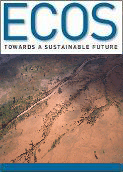
|
Published: 19 November 2012
Top supercomputer focused on the environment
Australia’s top supercomputer – just rated number 24 in the world on the TOP500 list of best supercomputers – is being used to deal with major environmental challenges such as climate change and water management.

|
|
The supercomputer is comparable in scale to about 30,000 desktop computers working together in parallel. Credit: Andrey Prokhorov/iStockphoto
|
The Fujitsu Primergy Supercomputer installed at the National Computational Infrastructure (NCI) facility at the Australian National Unviersity has formally been recognised as the most powerful computer system available to researchers in Australia.
The facility is funded by the Australian Government under its Super Science Initiative to advance Australian computational research and, in particular, climate change, earth system science and national water management.
‘Advanced computational methods form an increasingly essential component of high-impact research,’ said NCI Director, Professor Lindsay Botten.
‘In many cases they underpin discoveries that cannot be achieved by other means, and provide the platform on which to sustain innovation at an internationally competitive level.
‘The NCI delivers a world-class, high-end computing service to Australian researchers across a broad range of fields, including climate and earth system sciences, astrophysics, computational biology and chemistry, medicine, physics and photonics.’
The supercomputer has approximately 57,500 cores, 160 terrabytes (TBytes) of main memory, and 12 petabytes (PBytes) of disk – comparable in scale to about 30,000 desktop computers working together in parallel. It is capable of achieving an internationally competitive peak performance of 1,200 terraflops (TFlops).
NCI is a formal collaboration between the ANU, CSIRO, Bureau of Meteorology and Geoscience Australia, along with universities, and the Australian Research Council.
It provides expert support and development for application and system software, a range of consultancy, training and outreach programs, and access to high-end computational facilities for industry, including start-up companies.
Source: ANU



